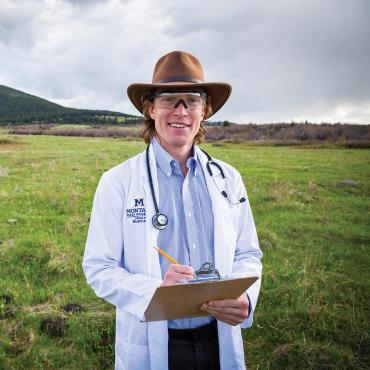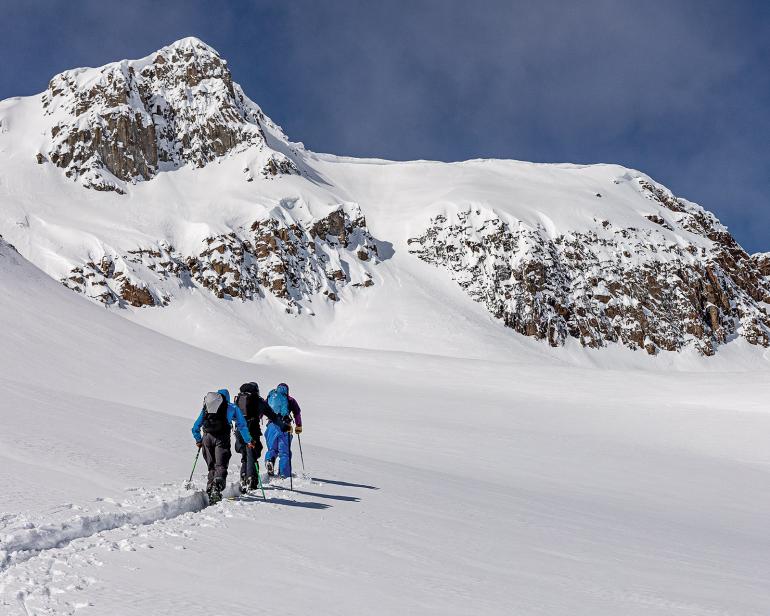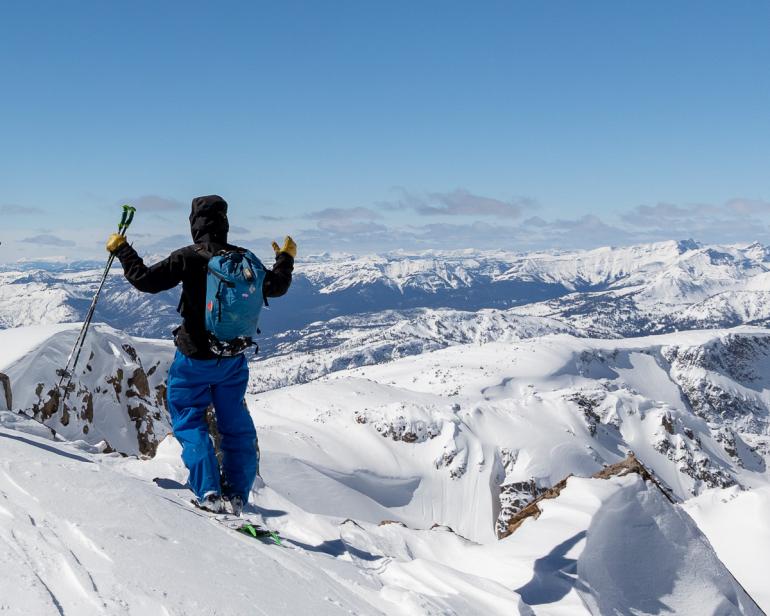Low-Tech
Going light and safe in the backcountry.
“Life is really simple, but we insist on making it complicated.” —Confucius
Nowadays, the outdoor-goods market is flooded with high-tech products designed to keep you from being weighed down on your next ski tour. With ultralight stoves, tents, sleeping bags, water filters, utensil sets, and carabiners, you can save weight by purchasing the most up-to-date products. Or—brace yourself—you can save even more weight by bringing none of that stuff. Newsflash: you don’t need an emergency shelter and rations of freeze-dried food if you’re going on a half-day ski tour. You also don’t need distractions. Just enjoy the outdoors. On that note, here are some tips for light and safe winter excursions that don’t require purchasing piles of fancy gear.
Dos & Don’ts
DO bring calorie-dense, carbohydrate-rich snacks. Your body burns lots of carbs in the cold, so replenish as much as you can. Sugary drink mixes are great for cold-weather calories.
DON'T bring more food than you’ll actually consume. Food is heavy, and it sucks to arrive back at the car with uneaten items. If you brought too much last time, bring less this time.
DO carry some kind of first-aid kit. Anticipate potential problems and pack the kit accordingly. Long distance? Blisters. Sharp skis or crampons? Cuts. Hucking huge cliffs? Broken vertebrae.
DON'T just buy a pre-made kit and throw it in your pack. They’re great, as they’re organized and identifiable, but the first thing you should do is dump out the contents, then add back what you need, and supplement anything missing.
DO limit accessories to essentials. And like the first-aid kit, this depends on what you’re doing. A mellow jaunt on Nordic skis obviously requires less gear than skiing in avalanche terrain.
DON'T venture deep into the backcountry during winter without these three things: headlamp, extra gloves, and a method for starting fire. And here’s a tip: dead wood becomes extremely dry in sub-freezing temps.
You don’t need an emergency shelter and rations of freeze-dried food if you’re going on a half-day ski tour. You also don’t need distractions. Just enjoy the outdoors
Staying Warm
LAYERS. You should be able to comfortably wear all of your layers at the same time, so size them accordingly.
MOVEMENT. Moving your muscles creates heat. Don’t overlook this. If you’re cold, get that heart rate up.
Water
Frozen water is just dead weight. Leave the fancy hydration pack at home—it’s hard to keep the hose unfrozen in winter, even with an insulating sleeve. Fill bottles with warm water before heading out, and they’ll stay well-insulated among the contents of your pack. You may still find running water sources in the winter, but beware: drinking cold water can make you colder.
Solo Travel
Going out alone in winter is completely different than going with a partner, so plan accordingly. This should primarily affect your risk tolerance—what kind of terrain you’re exposed to, how far you’re getting from a busy area, etc. An accident with a partner is bad, but an accident by yourself is much, much worse.
Packing
How you pack for a ski tour is just as important as what you bring. Here’s how to do it right.
ACCESS. Put frequently-needed items in the most accessible locations. Sounds obvious, but we still see folks exploding the contents of their packs in the snow just to grab a drink of water.
SUSTENANCE. Snacks, water, and an extra layer should be easily accessible. These are the items that will keep you trudging through the cold.
SURVIVAL. Bury the first-aid kit, firestarter, and extra gloves in the bottom of your pack, away from the opening, so they’re dry when you really need them.
KNOWLEDGE. A savvy mind is the best piece of equipment you could possibly have. Go out often to gain experience. Observe others. Learn what works and what doesn’t.











